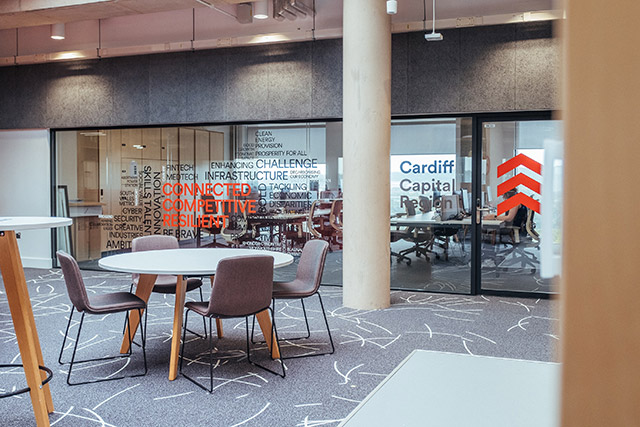The way councils in South East Wales work together to develop the region will undergo a major shake-up in early 2024.
Ten local authorities make up the Cardiff Capital Region (CCR), a partnership focused on regeneration, investment and transport infrastructure.
Key projects include the development of Newport’s semiconductor industry, new bus routes into Cardiff, and park and ride facilities at railway stations in Pontypool and Monmouthshire.
The CCR will also invest in the planned new rail and bus interchange for Caerphilly, as well as similar projects in Merthyr Tydfil and Rhondda Cynon Taf.
What is the Cardiff Capital Region?
Set up in 2017, it is a programme set up by the UK Government and ten councils in and around the capital city, namely: Blaenau Gwent, Bridgend, Caerphilly, Cardiff, Merthyr Tydfil, Monmouthshire, Newport, Rhondda Cynon Taf, Torfaen, and the Vale of Glamorgan.
Together they have committed to “nurturing the best conditions for business success” by improving transport connections and developing “hubs” for key industries.
The councils have signed up to a City Deal, which includes commitments to help fund the partnership’s projects over a 20-year span, City Deals are typically set up by government to drive regional economic development.
What does the Cardiff Capital Region do?
Part of the CCR’s work includes partnership working between universities, key public sector bodies and businesses, and there are some sectors – such as the specialised manufacturing of semiconductors for electronics equipment – which sit at the heart of the partnership’s plans.
A “mega foundry” set up on the edge of Newport received £37.9 million of CCR investment and is one of several sites in the city’s so-called “compound semiconductor cluster” – the first of its kind in the world.
In November, separately, UK chancellor Jeremy Hunt committed to making the CCR a new “investment zone” for further growth, worth £160m over ten years to develop businesses including the semiconductor cluster.
Beyond business support, the CCR also focuses on transport improvements, and the ongoing South Wales Metro project is central to that work.
The Metro plan is to develop an “integrated” public transport network that makes it easier for people to move around using trains and buses, and involves upgrades to stations, new tracks, and an overhauled timetable and ticketing system.
The CCR believes the Metro, once completed, will “enable more jobs, more investment and a better standard of living for all”.
How is the Cardiff Capital Region funded?
The City Deal is worth £1.2 billion of funding from the UK and Welsh governments, with around 60% of that ring-fenced for the South Wales Metro project. The remainder sits with the CRC’s leadership – made up of the ten council leaders – in a Wider Investment Fund.
As part of the City Deal, the ten councils contribute £125m to that fund, totalling £120m “drawn down as required”.
What changes are being made to the Cardiff Capital Region?
By April 2024, the City Deal’s current setup is expected to reform as a Corporate Joint Committee for South East Wales, which will have powers to directly employ staff, manage the CCR’s assets, and manage funding streams.
The committee has existed alongside the cabinet since 2021, but in a meeting on Monday December 4, CCR monitoring officer Jayne La Grua told council leaders the two organisations running side by side “creates some inefficiencies”.
In practice, the leadership will remain the same, but the shift to the Corporate Joint Committee will give the CCR “greater safeguards” for the future.

